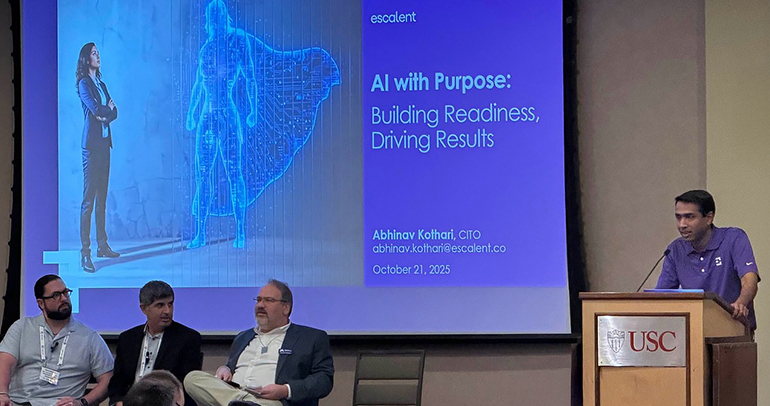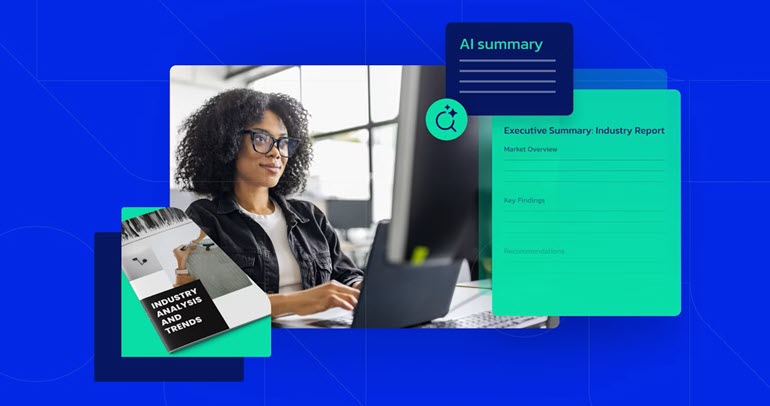
In recent years the popularity of electric vehicles (EVs) has risen. Teslas and other EVs have become a common sight on the road, as have charging stations in parking lots. Even in rural towns it is common to see EV charging stations. These findings aren’t purely anecdotal, as according to our EVForward® research on the next generation of EV buyers, among the new-car buyer population in the US, 3% now own an EV and 25% intend to buy one in the near future. With several US states offering consumers substantial financial incentives to buy a new electric vehicle, these numbers are expected to rise.
Addressing the Barrier of EV Charging
One of the biggest barriers to EV adoption has been lack of access to and the unavailability of safe, fast-charging stations where and when drivers need them. Much has been discussed in the industry about how to more quickly build out the infrastructure to serve the growing need for EV charging stations, which is high in consumers’ minds when thinking about EVs.
While access to public charging has been a major barrier to EV adoption in the past, this barrier is declining. New findings from our EVForward 2024 US EV Market Profile study reveal that only 25% of new-car buyers cited lack of access to public EV charging as a barrier. The technology industry has played an important role in alleviating these concerns, mainly through navigation and charging location and type apps. Now, these companies can turn to continually improving the public EV charging experience for consumers while also capitalizing on the growing EV market.
As more EV drivers enter the roadways, we wanted to better understand their EV charging habits, expectations and desires when driving locally and taking road trips so we could pinpoint how technology companies can best serve the EV market. To do this, we interviewed a US online sample of 1,000 EV owners and EV Intenders.
Consumer Preferences on Navigation and EV Charging Methods
When taking road trips with an EV, we found online search (57%), general navigation services (45%) and in-car navigation services (29%) are overwhelmingly the top preferred methods for locating a charging station in the US for EV Intenders and EV owners. This highlights the importance of services such as Google Maps, Apple Maps and Waze to display information that is meaningful—such as fast charger availability at each charging station—to EV drivers when they are trying to locate a charging station.
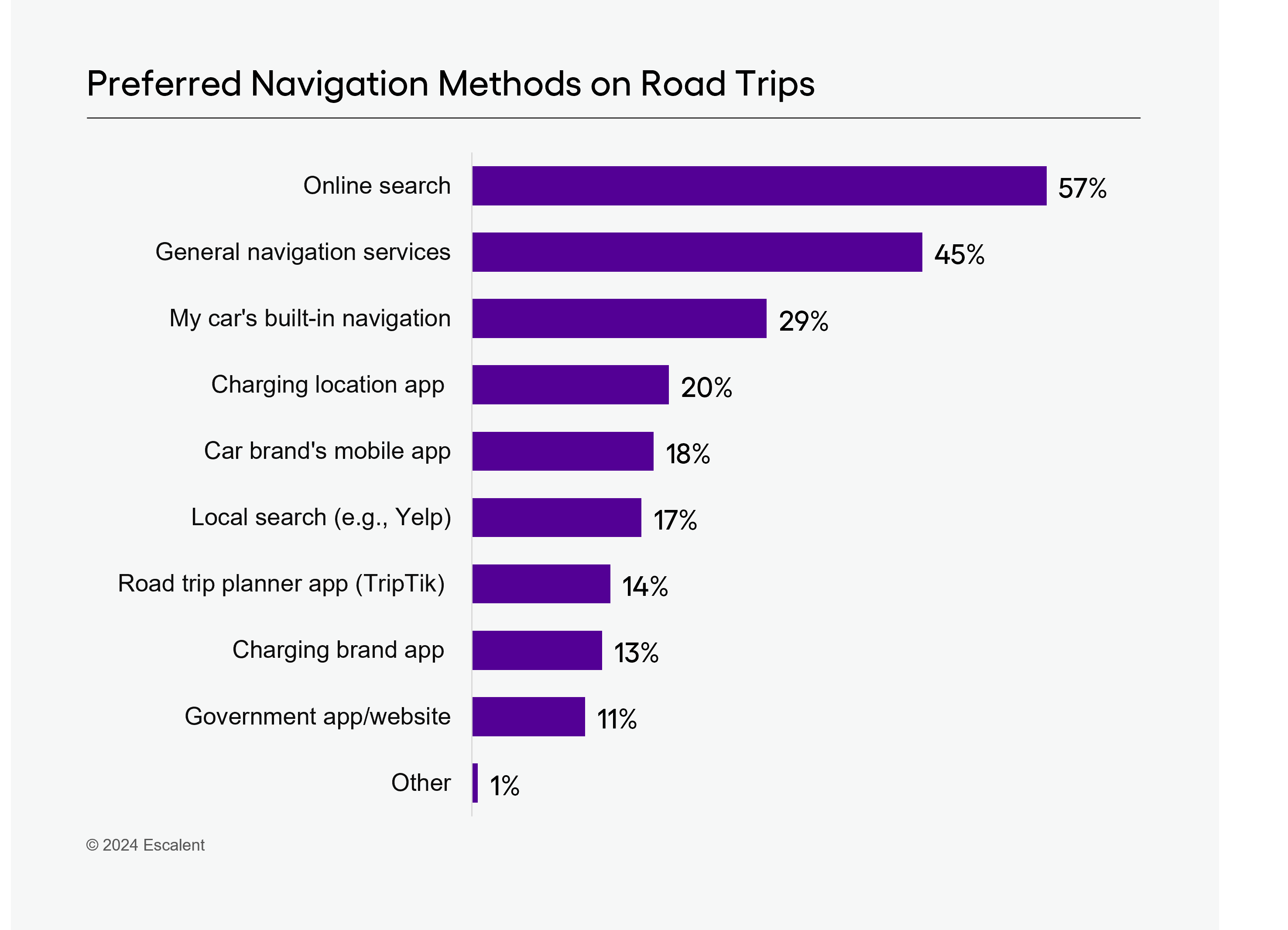
EV Charging Speeds, Reliability, Safety and Cost
Beyond location, the top five factors that impact charging station selection while on road trips include charging speed (51%), location being close to travel route (48%), safety (47%), cost (46%) and charging reliability (43%). Consumers are likely to favor apps that supply this information; while this information is included in some apps, it is often incomplete. For example, some fast-charging stations do not integrate with Google Maps to display charger availability, whereas the availability of a charger and not having to wait is a strong consideration factor (39%) for EV drivers when choosing a charging station.
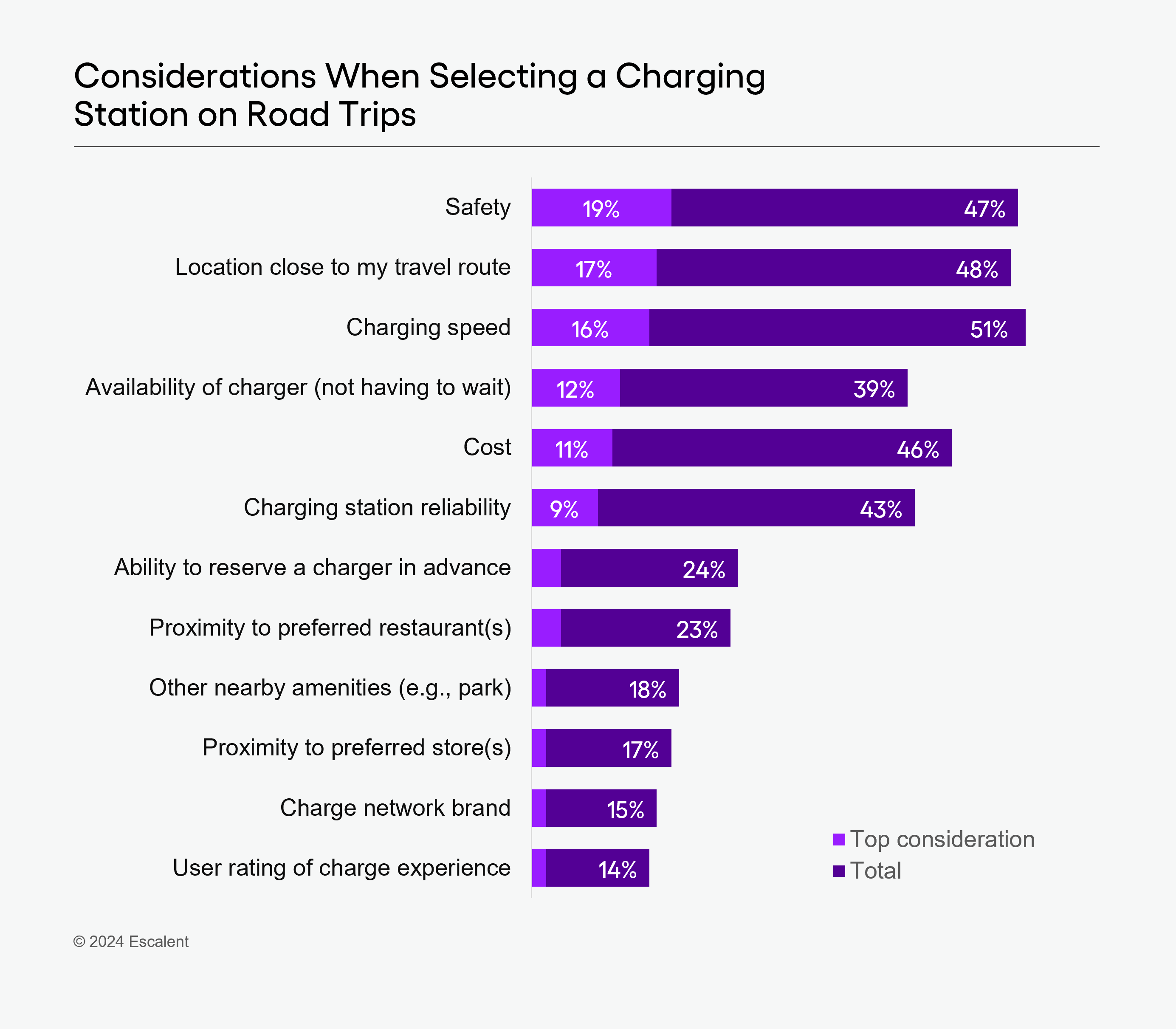
Moreover, we found that during road trips, if all EV charging station plugs are occupied at a charging station, more than half of EV drivers would either drive to an alternate station with available plugs (25%) or research where the next nearest charging station is and hope it has available plugs (28%). This underscores the need to include EV charger availability information within charging or navigation apps so consumers know where to charge most efficiently when they require it.
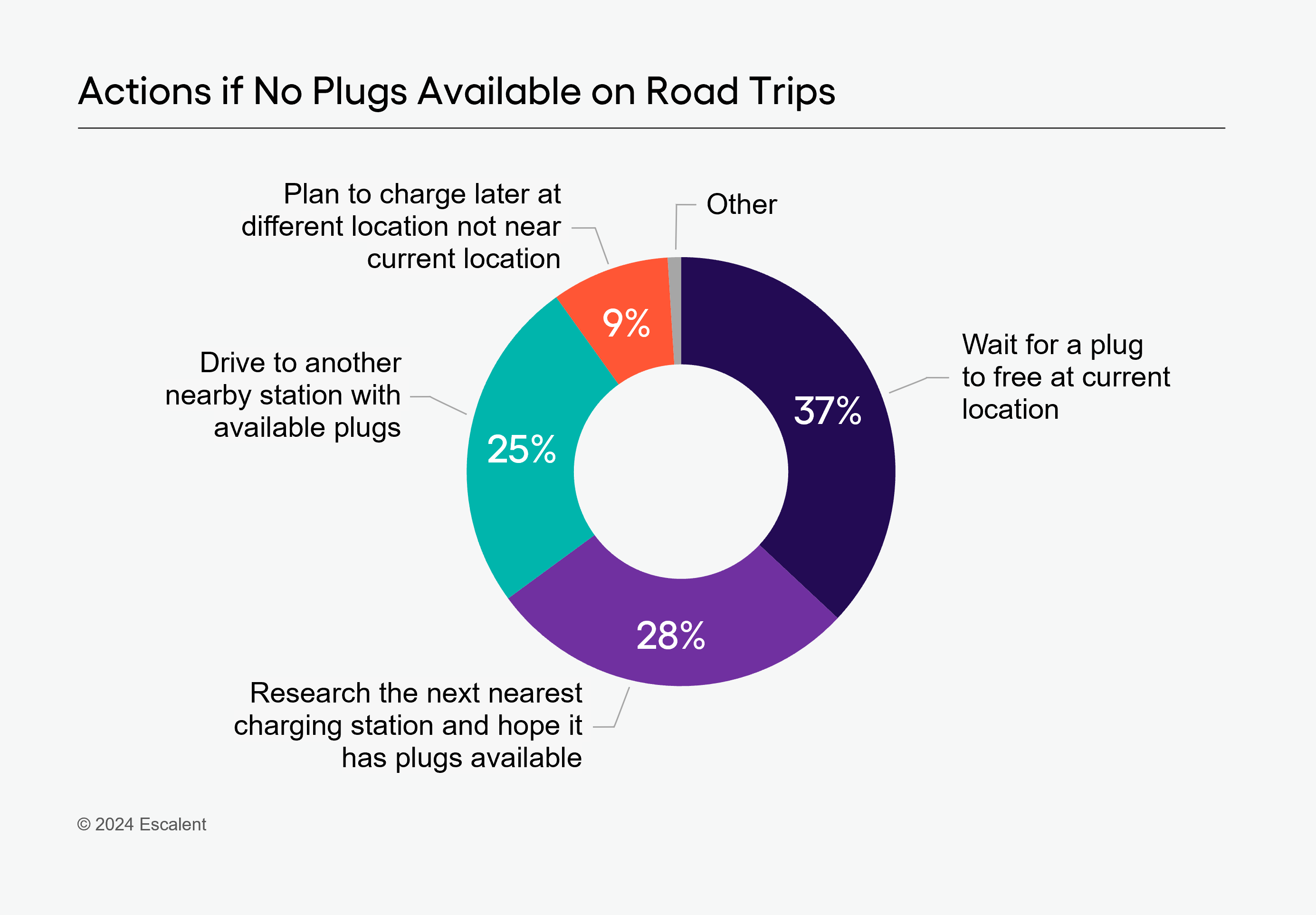
Keeping all EV charger information up to date is important as it allows EV drivers to more effectively plan their charging stops and eliminate unwanted surprises. Further, consumers will be attracted to apps that get this right as it is so important to the driving, traveling and public charging experience. With cost also being a top consideration, charging and navigation apps can play a key role in providing alerts to possible charging station fines (staying plugged in after charging is complete), which would help EV drivers assess the cost-risk associated with various EV charging stations.
The Intersection of EV Charging, Technology and Retail
In our previous post, we talked about how retailers, convenience stores and quick-service restaurants can invest in EV charging infrastructure so EV drivers can stop, charge their vehicle and simultaneously fulfill other needs at these locations, thereby adding a new revenue stream for these businesses.
According to our findings, nearly half (47%) of drivers indicate they would be more likely to choose a store or restaurant to charge at if they received a discount on purchases. Also, 44% said they would be more likely to choose a store or restaurant if they could use their reward points to pay for charging their EV.

This opens the door for charging app and navigation companies to create new revenue streams by partnering with retailers and destinations (such as state parks or tourist attractions) to promote their EV charging stations and offerings. The apps could even deliver targeted ads with discounts and rewards to these locations. In this way, the apps can serve as advertising channels to entice consumers to take a break from driving and grab a bite to eat, shop at their favorite retailer, or take in entertainment while they charge their EV.
Imagine a family on a road trip with kids who need to use the restroom and parents who need to charge their EV. When looking for the nearest EV charging station, the navigation app the parents are using could offer a 10% discount to a quick-serve restaurant with an available charger on their route. At one convenient location, the family can charge their EV, use the facilities and enjoy a discount while fueling up the family with a snack or meal. This is a win-win-win scenario for app companies, retailers and consumers, as EV drivers can take advantage of discounts and rewards while enjoying their favorite foods and beverages or shopping and entertainment activities as their EV charges.
Finally, as drivers charge their EVs, there are opportunities for app providers to build in features to collect user feedback on charging locations, allow users to make dining or entertainment-related reservations, and easily process payments for charging or link to other apps to order and pay for goods and services.
As the automobile becomes the next great frontier for advertisers, companies such as 4Screen say they will “give a voice to businesses by providing engaging in-car communications.” Navigation and charging app companies can capitalize on these advertising dollars, too, by serving up ads on their platforms.
EV Charging Education, Reservations, Payments and Rewards
Now that there is one EV charging station for every 15 gas stations, apps that facilitate finding EV charger locations and provide updated charger information are becoming table stakes. As such, EV charging and navigation app providers have a golden opportunity to expand app features and deliver new services that make owning and driving an EV seamless and worry-free for drivers—which, in turn, would create a sticky app experience for users and build brand loyalty.
The key lies in expanding functionality through the following:
EV charger locator
- Find nearby EV charging stations
- Show station types (Level 1, Level 2, Fast Chargers)
- Provide directions to nearby EV charging stations
EV charger information
- Provide live updates on charger availability
- Share community reviews of EV charging stations
- Collect user feedback on cleanliness, safety, overall experience, etc.
EV education
- Optimize charging schedules based on electricity rates, grid demand and user preferences
- Educate users about different charging speeds, connector types and best practices
- Provide troubleshooting guides to assist users in case of issues during charging
EV charger reservations
- Allow users to reserve EV charging spots in advance, reducing wait times
- Serve up discounts on lodging along the route and allow an interface for reserving a room
- Serve up rewards or discounts off attractions coming up along the route
Payments and rewards
- Integrate payment systems to simplify transactions, making it seamless for users to pay for EV charging sessions
- Provide points, discounts, and/or rewards for using specific EV charging stations
- Include gamification features to encourage users to charge at specific locations
Creating a More Holistic EV Ecosystem
As the EV market grows and matures, tech companies can contribute significantly to the growth of EV adoption by simplifying public EV charging processes, enhancing user convenience and experience, and fostering a supportive EV community via helpful, popular apps.
Tech companies will need to collaborate with automakers, retailers, utilities and governments to create a more holistic EV ecosystem that serves consumers, businesses and advertisers alike. As the apps evolve, they can help consumers better understand new types of EV charging as the infrastructure is further developed, and how EV drivers can better plan road trips and family vacations. App providers can also partner with automakers, energy companies and governments so that the full suite of EV chargers are available to drivers, independent of vehicle type. Finally, as more people adopt EVs, app providers, retailers, attractions and entertainment companies can combine forces to make road trips with an EV enjoyable for the entire family.
To learn more about the findings from our study on How the EV Revolution Will Upend the Energy, Retail and Technology Landscapes and how you can position your business for success, join us for a webinar on May 21 at 1pm EDT. Click the button below to register.
Want to learn more? Let’s connect.
About the Study
From August 22 to September 6, 2023, Escalent conducted interviews with a national sample comprising 1,000 individuals. These participants included EV owners, EV Intenders and individuals who were considering purchasing an EV. The age range of respondents spanned 18 to 80 years. The recruitment process involved selecting participants from the PureSpectrum opt-in online panel of US adults, and the interviews were conducted online. Any reported margins of error or significance tests are estimated and rely on the same statistical assumptions as data collected from a random probability sample. Escalent will supply the exact wording of any survey question upon request.






